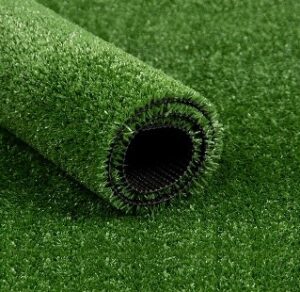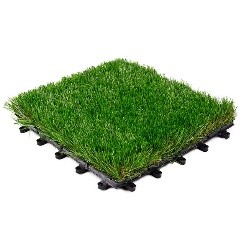September 12, 2023
The Environmental Benefits of Artificial Grass Over Natural Grass

On any image showing a beautiful ideal home involves a green and impressive lawn. The most important part of any outdoor living area is a lawn. Other than the visual aesthetics, grass lawns serve as a space that is great for children and pets to play on. Thanks to technological advancements, you can now choose artificial grass, also known as astroturf over natural grass.
When it comes to creating lush green spaces, both homeowners and businesses often face the decision between natural grass and artificial grass. While natural grass has its own appeal, artificial grass is gaining popularity for various reasons, one of which is its positive impact on the environment. At Rubber Online, we understand the importance of eco-friendly choices, and that’s why we’re here to highlight the environmental benefits of choosing artificial grass over natural grass.
Water Conservation: One of the most significant advantages of artificial grass is its contribution to water conservation. Natural grass requires substantial amounts of water to maintain its vibrant appearance. In contrast, astroturf doesn’t need constant watering, helping to reduce water consumption. This is especially crucial in regions prone to drought or water scarcity, where maintaining a natural grass lawn can strain local water resources.
Reduced Chemical Usage: Maintaining a natural grass lawn often involves the use of pesticides, herbicides, and fertilizers to keep the grass healthy and free from pests. These chemicals can leach into the soil and waterways, causing harm to the environment and wildlife. With artificial grass, there’s no need for these harmful chemicals, promoting a healthier ecosystem and reducing chemical pollution.
Lower Carbon Footprint: The maintenance of natural grass requires regular mowing, which typically involves gas-powered lawnmowers emitting greenhouse gases. Artificial grass eliminates the need for frequent mowing, leading to a reduced carbon footprint. By opting for artificial grass from our astroturf product category, you’re contributing to cleaner air and a healthier planet.
Conservation of Resources: The production of natural grass demands significant resources, including land, water, and energy. On the other hand, artificial grass is manufactured using sustainable materials, reducing the need for land and water. Additionally, the longevity of artificial grass means less frequent replacements compared to natural grass, further conserving resources in the long run.
Preservation of Wildlife Habitat: Natural grass lawns often disrupt local ecosystems by displacing native plants and disturbing wildlife habitats. Choosing artificial grass helps preserve these habitats, as it doesn’t require the same level of maintenance that can disrupt the natural balance of the environment.
There are a lot of different types of artificial grass and they all have different price ranges! These choices can be a bit overwhelming at first, but it’s a good thing. More choices mean there’s a better chance you’ll find the turf that’s right for you!
If you want something easy for a small space, you should choose tiles. If you’re looking for something more permanent to cover a large space, you should choose rolls.

At Rubber Online, we’re dedicated to providing environmentally conscious solutions for all your needs. Choosing artificial grass over natural grass offers a myriad of environmental benefits, from water conservation to a reduced carbon footprint. By making the switch, you’re taking a step towards creating a more sustainable future while still enjoying the aesthetic appeal of a vibrant green space.
Make the eco-friendly choice today and explore our Artificial Grass products to find the perfect solution for your space and budget. Join us in contributing to a greener, healthier planet.
